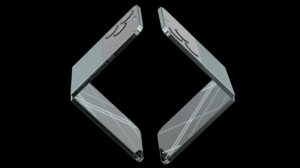Every year, Apple’s iPhone release triggers a wave of YouTube videos showcasing extreme durability tests. While these unscientific tests entertain, they pale in comparison to the rigorous, methodical testing conducted in Apple’s own durability labs.
Recently, renowned tech YouTuber Marques Brownlee (MKBHD) provided an exclusive look into Apple’s testing processes, revealing the extensive measures taken to ensure iPhone resilience.

In a series of short videos, MKBHD detailed his visit to Apple’s secretive durability testing labs. Here, iPhones undergo a variety of tests designed to measure their durability and water resistance under different conditions. The highlight of these tests is the evaluation of the iPhone’s IP (Ingress Protection) rating, which determines its resistance to dust and water.
Water resistance testing
Apple’s testing includes four levels of water exposure:
- Drip tray simulation: mimics light rain with no pressure (IPX4 rating).
- Low-pressure jet spray: subjects the device to water jets from various angles (IPX5 rating).
- High-pressure firehose spray: blasts the handset with powerful water streams (IPX6 rating).
- Underwater pressure simulation: submerges the iPhone with added pressure to simulate depth (IPX8 rating).

These tests ensure that devices like the iPhone 13 and iPhone 15 Pro Max can handle real-world scenarios, from rain and accidental spills to brief submersion.
Drop tests
To evaluate structural integrity, Apple employs industrial robots to drop iPhones from various heights and angles. Advanced slow-motion cameras capture these impacts, allowing engineers to study the results and enhance the device’s durability.

Vibration tests
Apple also simulates vibrations that an iPhone might experience in a biker’s pocket or on a subway. This is crucial for understanding how sustained exposure to specific frequencies affects the device.

Beyond YouTube durability tests
Unlike YouTube’s dramatic and often exaggerated tests, Apple’s procedures are scientifically designed to emulate real-life conditions accurately. The tech giant tests over 10,000 pre-release devices to identify and rectify any weaknesses before a new iPhone reaches the market.
During his visit, MKBHD interviewed John Ternus, Apple’s Head of Hardware Engineering, who explained the balance between durability and repairability. Apple opts to make its devices more durable, even if it means they are harder to repair. For instance, waterproof seals and adhesives that protect against water damage also make it more challenging to open and repair the device.
#6 Thankfully Apple is still softening their stance on repair – basically sliding slightly on that durability vs repairability spectrum pic.twitter.com/OA3f4JeOQe
— Marques Brownlee (@MKBHD) May 29, 2024
Apple’s marketing of iPhone durability and water resistance has faced scrutiny. For example, the company was fined by Italy’s antitrust authority for misleading promotions about water resistance capabilities. Apple clarifies that while iPhones are highly resistant to water, they are not entirely waterproof, and water damage is not covered under warranty. This emphasizes the need for careful handling despite robust IP ratings.
Apple’s commitment to durability goes hand-in-hand with its environmental goals. By making devices that are less prone to failure, Apple reduces electronic waste and the need for frequent repairs. However, the company acknowledges the importance of repairability and is gradually improving support for user repairs.



